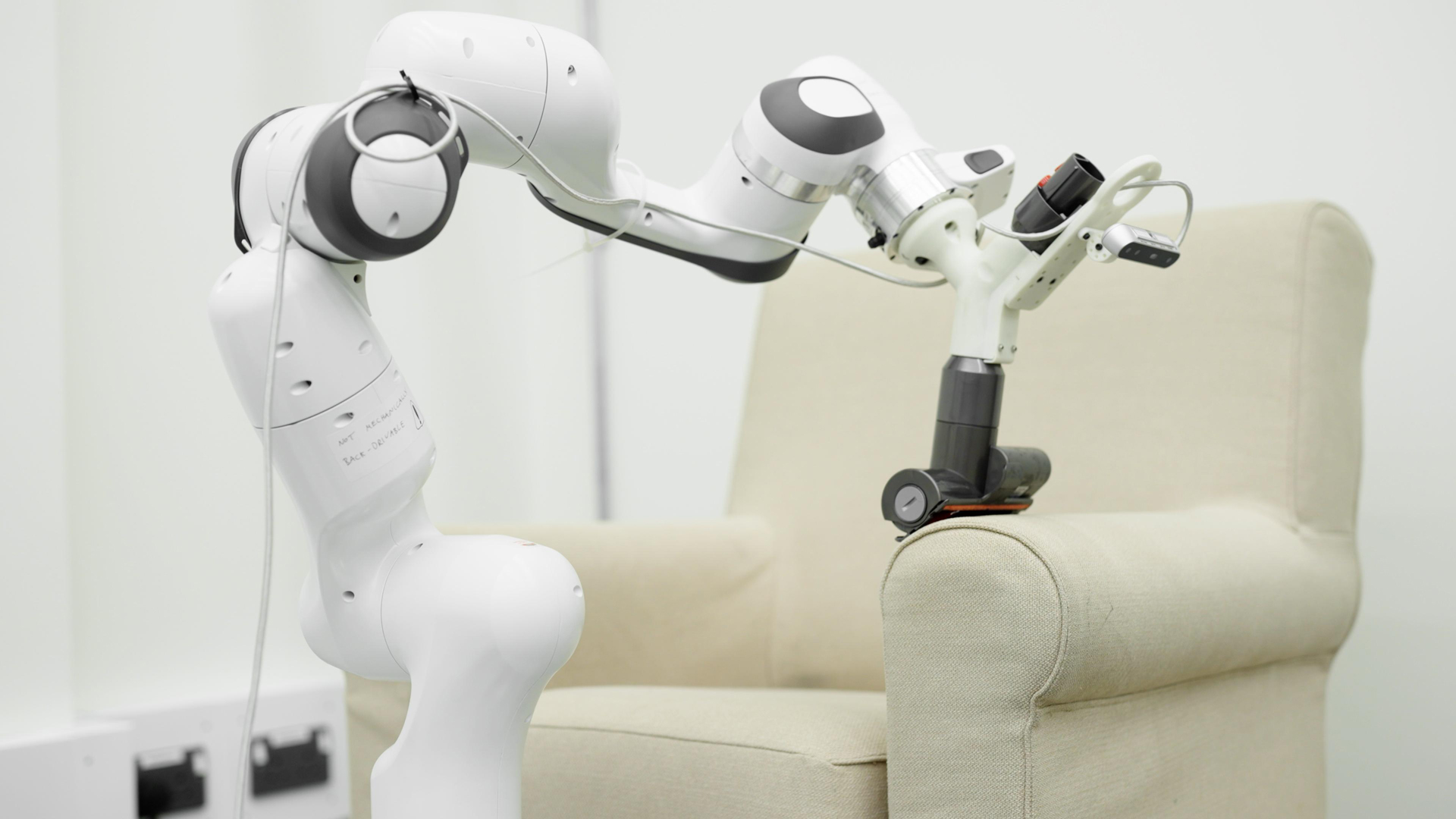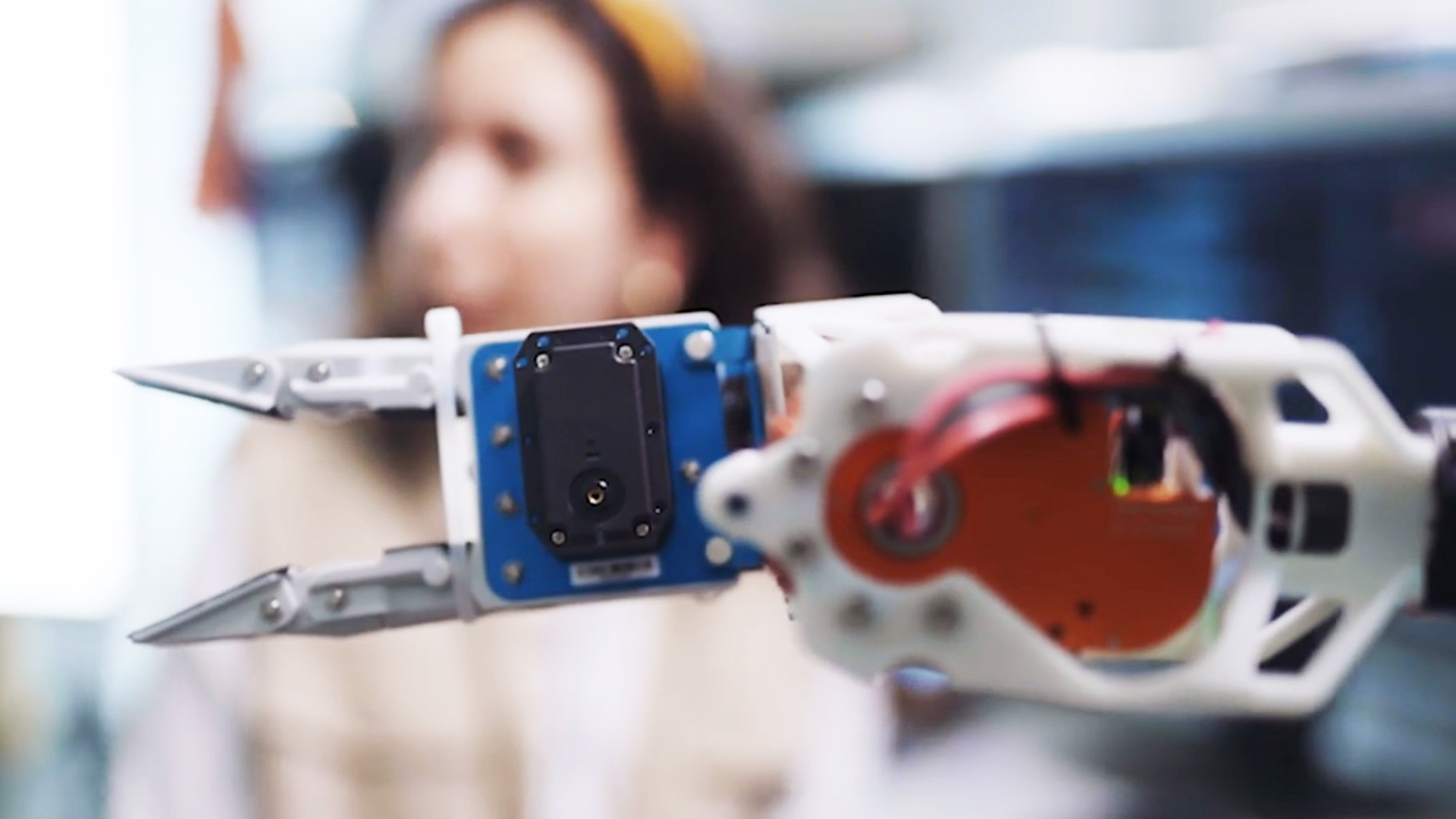It’s no secret the vacuum innovator Dyson is into robotics, but it’s more serious about it than anyone knew.
Six years ago, the company introduced its Dyson 360 Eye robotic vacuum, which managed to be a perfect blend of forward-leaning automation and slightly out-of-step innovation (it lacked the latest Wi-Fi connectivity channel, and Dyson locked in the camera as a navigation system almost a decade before delivering the first product).
These days, you can’t even buy a Dyson 360 Eye in the US (opens in new tab), but that doesn’t mean the company’s robotic ambitions are done. Far from it.
This week and without much fanfare, Dyson posted a video (opens in new tab) offering a peek at the company’s “top secret” robotics work. Hosted by Jake Dyson, the son of founder and CEO James Dyson, the video offers a rare glimpse of Dyson’s ongoing efforts to crack the home robotics nut.
Standing before a pair of large hangers at the Hullavington Airfield in Wiltshire, London, Dyson said the company has a “big future in robotics” and has been working with Imperial College researchers on developing all kinds of automatons that can save people time and improve their lives.

The robots, at least those we could clearly see (some of the super-secret stuff was blurred out in the video), were busy gingerly grabbing children’s toys off the floor with articulated robot hands, snatching plates from a drain, and using robotic vision to guide a robot arm equipped with a tiny Dyson Vaccum to clean a living room easy chair.
“This means I’ll never ever find crisps down the back of my chair – ever,” joked Dyson with one uncomfortable-looking researcher.
Most of the robots shown off represent Dyson’s current advancements in robots meant for household environments, including challenging ones like staircases. In the video, we see a set of stairs, but no robot is attempting to navigate them.
Home robotics is a notoriously difficult market. iRobot, arguably the most successful consumer robotics company in the world, has done well but hewing close to its robot vacuum roots. It’s done some work in delivering healthcare robot systems (opens in new tab) in hospitals, but that’s clearly not the company’s focus.

Dyson’s ambitions, at least for now, appear much grander, though it was not above taking a subtle dig at iRobot when Dyson mentioned its 360 robot vacuum and added, “and ours really vacuum, by the way.” In truth, so do Roombas — albeit with about half the suction power of a Dyson 360 Eye (and far less suction power than a standard Dyson upright vacuum).
Even though Dyson said robots (and wearables) are “the future of Dyson,” and that the research projects are now ripe, the reality is that there’s no telling if or when any of these Dyson robots will ever appear in our homes. However, Dyson said that what they learn from this robot research does feed back into current products to enhance their functionality and performance for consumers.
The truth is, this isn’t a product launch announcement, it’s Dyson’s recruitment video. Dyson said that, among other things, it wants to hire 700 engineers to work on a robot brain. Where that “brain” might go, though, is unclear. Most of the robots we do see in the video are robot parts: arms, hands, and vision systems. At no point did Dyson turn a corner and walk smack into a humanoid Dyson robot.
But to be fair, we didn’t see the whole research center. That hulking robot could’ve been lurking anywhere…
For robots that you can buy and use today, check out our best robot vacuums.




